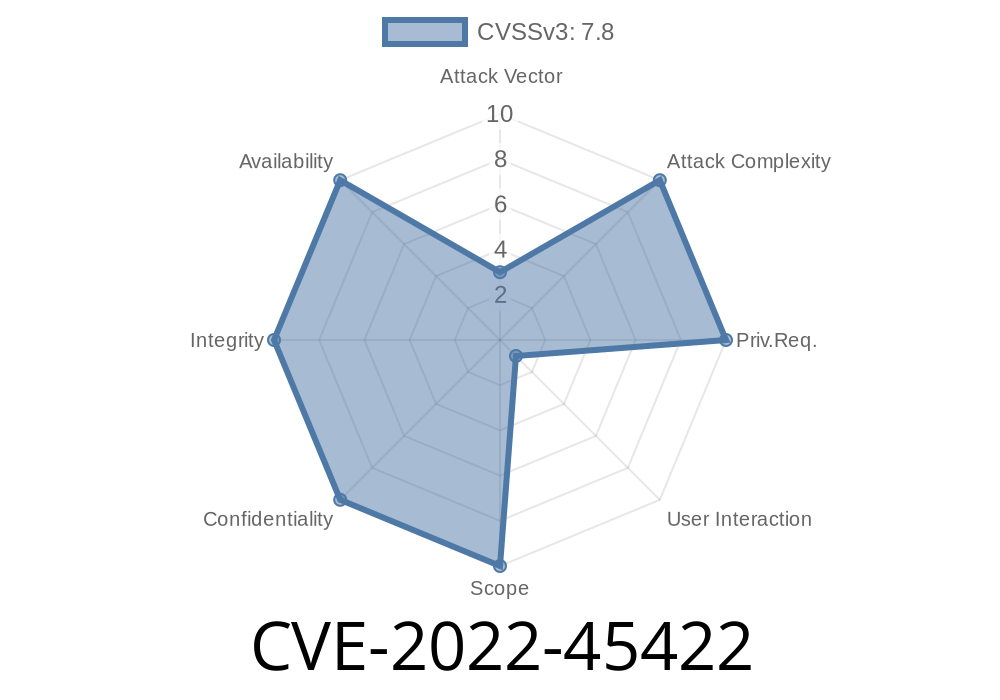In recent times, there has been an increase in the number of vulnerabilities discovered in various software applications. One such vulnerability has been discovered in LG SmartShare, a popular software used for sharing content between devices. This vulnerability, CVE-2022-45422, allows for local privilege escalation through a DLL Hijacking attack. Let's delve into the details of this vulnerability and understand how it could be potentially exploited.
Background
LG SmartShare is a software application that enables users to share multimedia content (such as pictures, videos, and music) between their smartphones, tablets and LG Smart TVs. It utilizes a "miracast" feature for short-range, high-speed wireless transmission of AV content between devices.
Exploit Details
The vulnerability CVE-2022-45422 is related to the way LG SmartShare loads dynamic link libraries (DLLs). Due to a misconfiguration, the application is susceptible to a DLL Hijacking attack, which could allow an attacker to execute arbitrary code on the victim's machine with the same privileges as the user running the LG SmartShare application.
A DLL Hijacking attack occurs when the application loads an unsigned and malicious DLL instead of a legitimate one, ultimately executing malicious code. Attackers could leverage this vulnerability to gain escalated privileges on the targeted machine, leading to the potential compromise of sensitive data or unauthorized installation of malicious software.
To demonstrate the exploit, we will present a code snippet that demonstrates the creation of a malicious DLL file:
#include <windows.h>
BOOL APIENTRY DllMain(HMODULE hModule, DWORD ul_reason_for_call, LPVOID lpReserved)
{
switch (ul_reason_for_call)
{
case DLL_PROCESS_ATTACH:
MessageBox(NULL, "DLL Hijacked!", "DLL Hijacking PoC", MB_OK);
break;
}
return TRUE;
}
This code snippet illustrates how a simple message box is displayed when a malicious DLL file is loaded by the targeted application. In a real attack, this code could be replaced with any desired payload for various malicious purposes.
CVE-2022-45422 Vulnerability Details
The LG ID of this vulnerability is LVE-HOT-220005. The Common Vulnerability Reporting Framework (CVRF) document for this vulnerability can be found at the following link:
https://www.lg.com/global/security/en/LVE-HOT-220005.xml
The National Vulnerability Database (NVD) entry for this vulnerability provides further details on the associated Common Vulnerability Scoring System (CVSS) score, impact assessment, and additional references:
https://nvd.nist.gov/vuln/detail/CVE-2022-45422
Conclusion
In conclusion, the CVE-2022-45422 vulnerability affecting LG SmartShare users should not be taken lightly. Due to the potential for escalated privileges on a targeted machine, this vulnerability could lead to significant damage if left unaddressed. Users should take the necessary steps to secure their devices and ensure that they are running updated software to prevent the exploitation of this vulnerability.
Timeline
Published on: 11/21/2022 17:15:00 UTC
Last modified on: 11/23/2022 15:56:00 UTC
